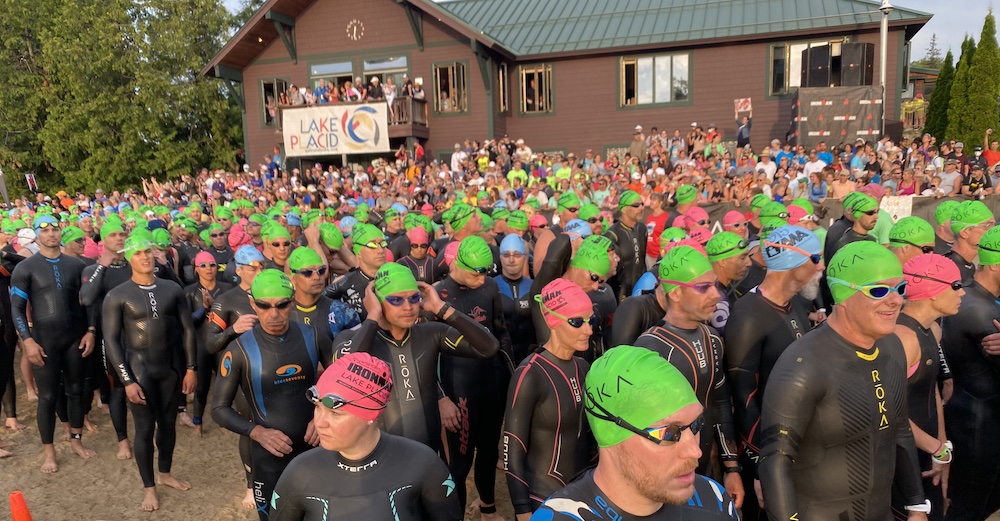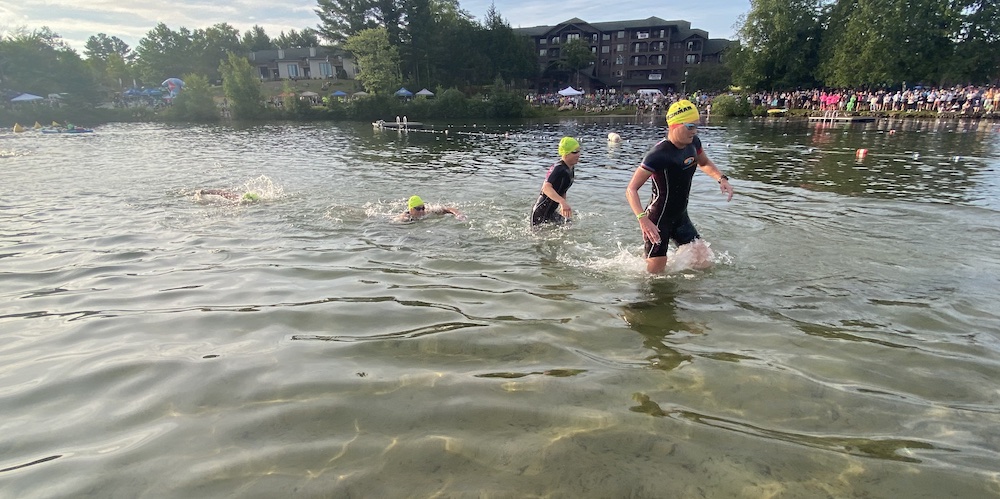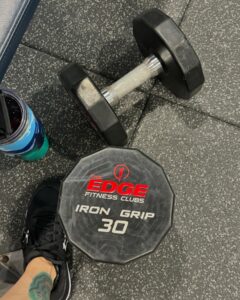It’s race morning. You’ve trained for weeks, months, or maybe even years for this one moment. It’s THE triathlon you’ve been working so hard for. You roll into the race site and you hear arguably the most dreaded words in all of triathlon:
It’s wetsuit optional.
First, let’s start off with some definitions.

The Wetsuit Rules
For almost all triathlons in the United States, you are governed by either the USA Triathlon Rulebook, or the unified World Triathlon / IRONMAN rulebook for their events. There are specific temperature ranges (all in Fahrenheit) that determine whether or not a race is wetsuit required, wetsuit permitted, wetsuit optional, or no wetsuits.
- Wetsuits Required races are typically events produced by IRONMAN where the water temperature is below 60.8 degrees.
- Wetsuits Permitted races are where water temperatures are below 76.1 (IRONMAN) or 78 (USA Triathlon). Your wetsuit may not cover your face, hands, or feet. You may also choose not to wear a wetsuit.
- Wetsuit Optional races are where water temperatures are above 76.1 (IRONMAN) or 78 (USA Triathlon) but below 83.8 (IRONMAN) or 84 (USA Triathlon). You may choose to wear a wetsuit in this temperature range; however, you are not eligible for awards or qualifying for championship events.
- Wetsuits Banned races are rare, but still happen. If the water temperatures are above the ranges from wetsuit optional, nobody is allowed to wear a wetsuit.
We also have to note that wetsuits are defined as any neoprene swimwear — so Lava pants, SIM shorts, etc. are all considered “wetsuits” under the rulebook. Swimskins, meanwhile, like the ones below are permitted at all times with the exception of when wetsuits are required.

From our example at the start — we’re in that optional category. You may choose to wear a wetsuit if you want to. So, how do you go about making that decision as to whether or not you should? Let’s go through a quick flow of questions to determine whether or not you should wear a wetsuit.
Should I wear a wetsuit?
- Am I going to be competing for an age group award or world/national qualifying slot? If yes, stop here. You’re not wearing a wetsuit. If no, continue.
- Am I going to overheat while wearing this wetsuit? This is an underrated question. Particularly for warmer weather races, you need to figure out whether you’re going to put so much heat stress on you by wearing the wetsuit that you will impact your racing more than the time penalty of not wearing the wetsuit. This is why many athletes own multiple wetsuits — fully sleeved for fastest times in cooler water, and then sleeveless for a good mix of speed and heat tolerance when it’s warmer. If you’re going to overheat, stop here: no wetsuit for you. If you’re not, continue to step 3.
- Am I worried about course cutoffs? For almost all races these days, there are two types of course cutoffs. There are “soft” cutoffs — the personal amount of time you get to complete each section in order to be considered an official finisher. And then there are “hard” cutoffs — everyone must be off the bike course by X time, for instance. If you wear a wetsuit during an optional event, you will be starting last. If that may put you in danger of hard course cutoffs, you should reconsider the wetsuit.
At the end of the day, especially when water temperatures are in the wetsuit optional range, there are no right or wrong answers. It’s about what’s best for you as an athlete to have an enjoyable experience. And if you have more questions, well, it’s probably time to ask your coach!




